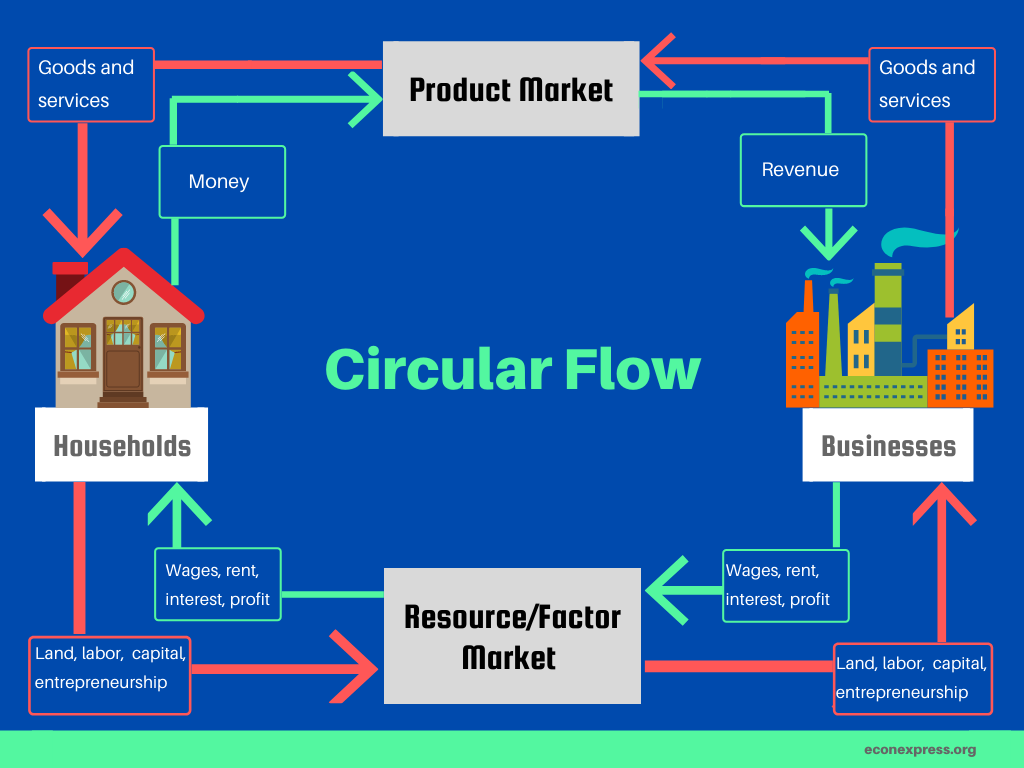Concept 15: Circular Flow of the Economy
Overview: Money, goods, and services are constantly being exchanged. Understanding who is making these exchanges and where they are made will help you understand the important role of interdependence in the U.S. and global economy.
Learn
Beginner
The circular flow of the economy is used to explain the relationship between money and goods and services. It is often represented with a circular flow model like the one seen in Image 15-1.

In the diagram, there are two primary actors in the economy – households and businesses. These two actors interact with each other in two markets – the product market and the factor/resource market. In the product market, households act as buyers purchasing the goods and services businesses are willing to sell. In the resource market, the roles are reversed with businesses paying households for their resources: land, labor, capital and entrepreneurship. The model clearly demonstrates interdependence, a recurring theme in economics.
Intermediate

The circular flow model is an oversimplified view of the economy. Ignoring for the moment that the US government and foreign countries are absent from this version, it is important to think about what is actually signified by the product and factor markets. Do not think of the product market as a “place” but as a representation of all the final domestic goods and services available for purchase in the economy. The price of a haircut, chicken sandwich, car, video game, streaming service, etc. are determined here.
Households bring money to these markets, and businesses provide the goods and services. Prices are negotiated over time. Importantly, the same kind of exchange is happening in the factor market, which is also not a “place.” It may be helpful to think of the labor market as four separate markets – one for land (specifically retail space or industrial real estate), one for labor, one for capital goods, and one for entrepreneurship. When you see a “help wanted” sign, that’s the factor market at work. The business is offering money for someone who can perform the job duties they are seeking. The business hopes that someone with those skills will eventually see that sign and be willing to provide the required services in exchange for the money (wages) the business is offering.
Advanced

If we were to add the government and international sectors to this diagram, we would be able to see how national production and income are calculated. Households spending money in the product market represents Consumption. Businesses spending money on capital goods represents Investment spending. Government spending is represented by the production and supply of public goods and services. The balance of exports minus imports (Net Exports) factors in the influence of the international sector. These four components make up what is referred to as the expenditure approach to calculating GDP, described further in Concept 25 – Gross Domestic Product. Simultaneously, the model also demonstrates the income approach by tracking the money received from wages, rent, interest and profits.
Click a reading level below or scroll down to practice this concept.
Practice
Assess
Below are five questions about this concept. Choose the one best answer for each question and be sure to read the feedback given. Click “next question” to move on when ready.
Social Studies 2024
Explain, using a circular flow diagram, the real flow of goods and services, resources, and money through the product market and the resource (factor) market.











